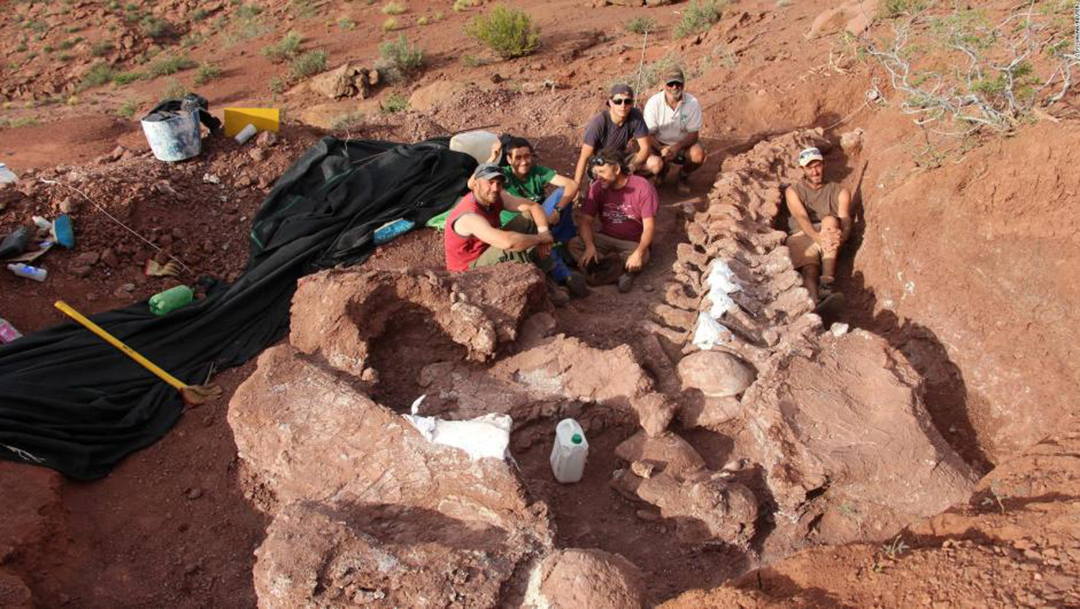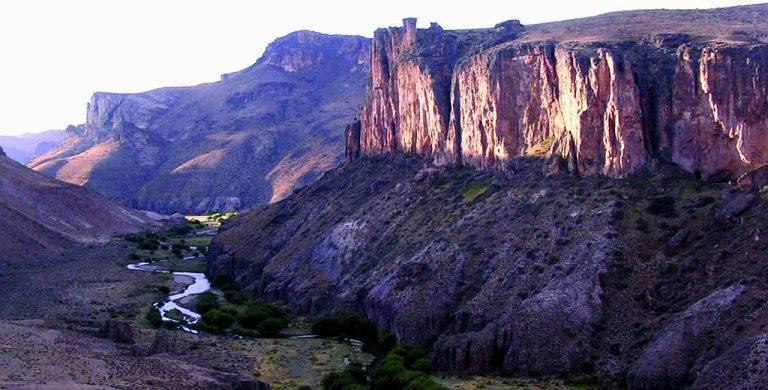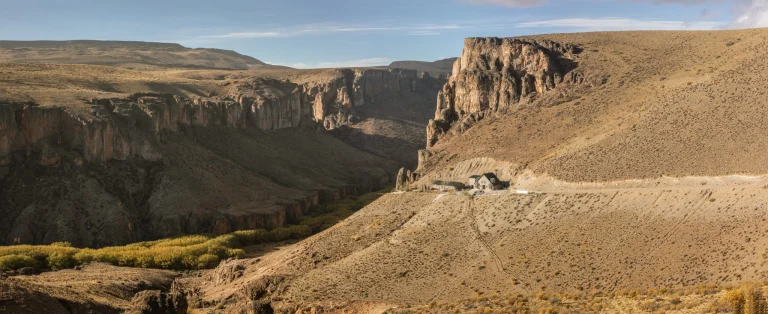In recent years, several important discoveries have been made and published in media outlets worldwide. We share the details, researchers’ insights, and why Patagonia was a land of dinosaurs. Plus, essential information for visiting the main dinosaur museums in Neuquén Province.
Ninjatitan zapatai: The New Titanosaur in Patagonia
We can confidently call Patagonia Land of dinosaurs, as new species continue to be discovered, astonishing scientists worldwide. The discovery of a new species that lived in Northern Patagonia (specifically Neuquén Province) 140 million years ago reveals something crucial: titanosaurs originated in the early Cretaceous period. The fossils were found in the middle valley of the Limay River between Picún Leufú and Piedra del Águila, in outcrops of the reddish-rocked Bajada Colorada Formation visible along Route 237 to Bariloche. Researchers emphasize that every new find is groundbreaking: “We’ve also found various groups of carnivorous dinosaurs and other herbivorous species here.”
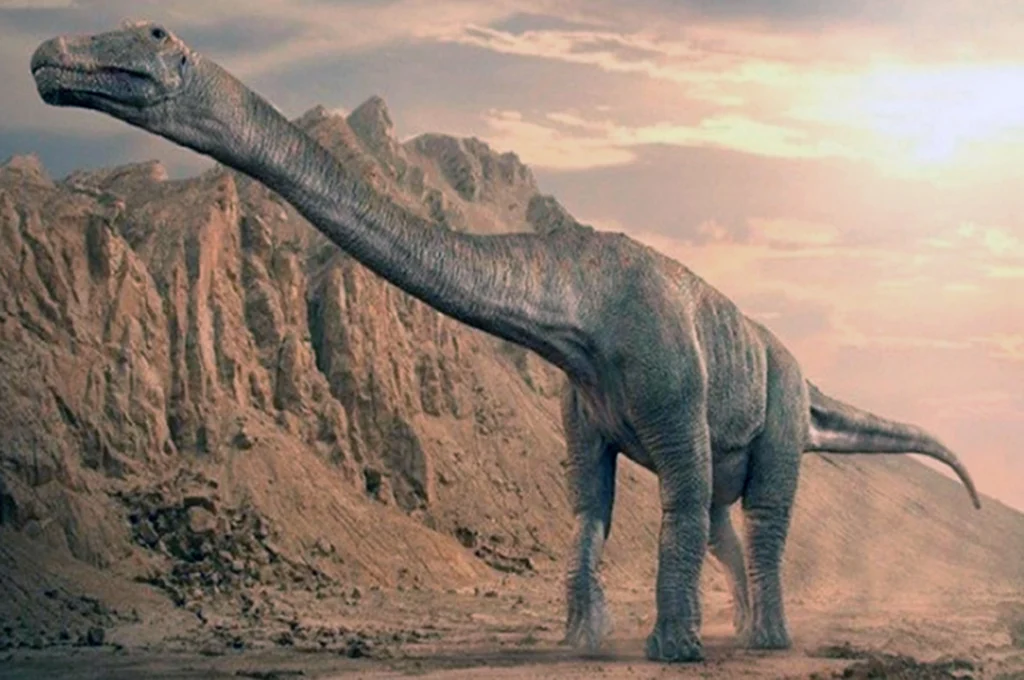
According to the Scientific Outreach Agency of Universidad de La Matanza (CTyS-UNLaM), Ninjatitan zapatai is a new Patagonian titanosaur—the oldest of its group at 20 meters long and 140 million years old—proving these dinosaurs emerged in the early Cretaceous. This discovery is monumental because “until now, no gigantic quadrupeds older than 120 million years were known, making Ninjatitan pivotal for understanding this group’s evolutionary history.”
The discovery began in 2010. Paleontologists from CONICET, Fundación Azara, and Universidad Maimónides—including Pablo A. Gallina and Juan Canale from Villa El Chocón’s Ernesto Bachmann Museum—have unearthed herbivorous long-necked dinosaurs and carnivores of varying sizes dating back 140 million years.
Pablo Gallina, lead author of the study published in Ameghiniana journal and researcher at CONICET, stated:
“This fossil’s greatest significance isn’t just being a new titanosaur species—it’s the world’s oldest record for this group. Such early Cretaceous fossils (140 million years old) are exceptionally rare globally, making this vital for understanding sauropod evolution.”
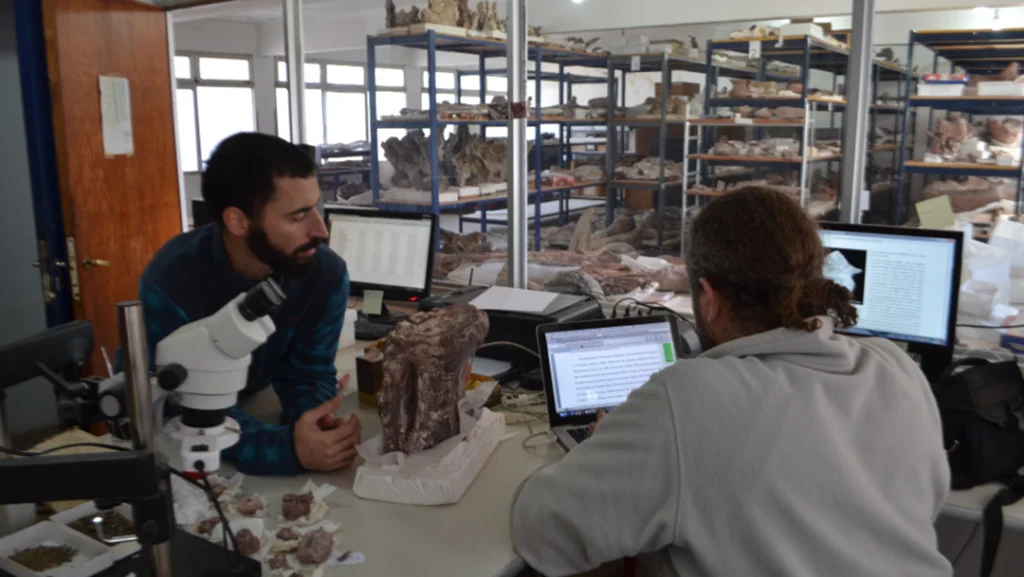
In 2014, technician Jonatan Aroca found the first remains at a rocky outcrop. The scapula was the initial identifiable bone extracted. Dr. Juan Ignacio Canale noted: “We realized its importance and prepared to continue work the next year.” After lab preparation, the team confirmed it was a new titanosaur species.
Dr. José Luis Carballido (Museo Egidio Feruglio/CONICET) explained: “Subsequent excavations revealed vertebrae and hind leg bones. Given their age, we initially thought it predated titanosaurs—previously, none older than 120 million years were known in Patagonia.” The study proved Ninjatitan zapatai is the world’s oldest titanosaur by tens of millions of years.
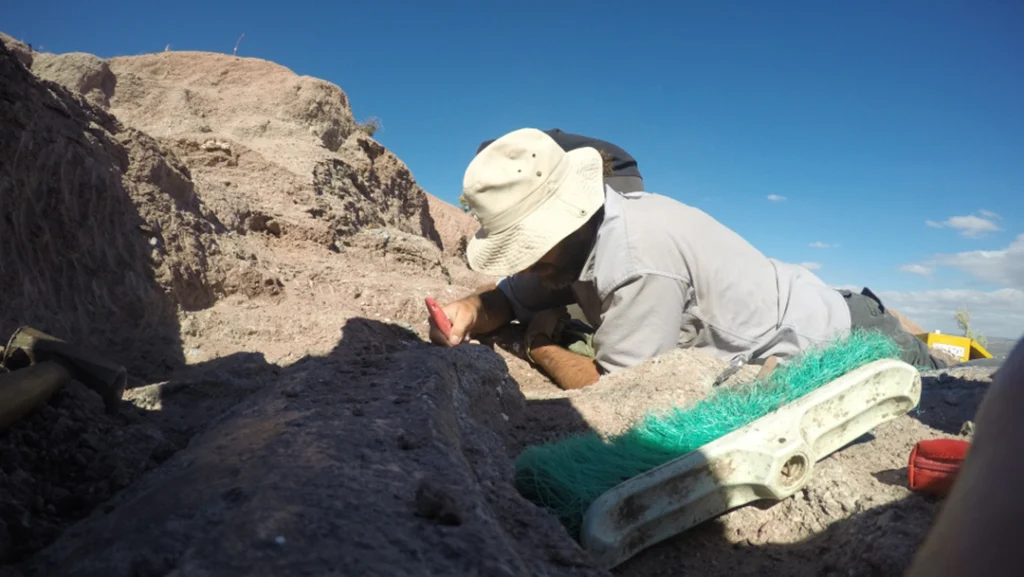
The species honors two key figures: paleontologist Sebastián “Ninja” Apesteguía (pioneer of Bajada Colorada explorations) and technician Rogelio Zapata (Villa El Chocón Museum), who handles fossil extraction and preparation.
Another Major Discovery: Patagotitan mayorum
Ninjatitan joins Patagonia’s roster of groundbreaking titanosaurs. In 2017, the world’s largest dinosaur—Chubut’s Patagotitan mayorum—was accidentally found by a ranch worker. After three years of excavations, CONICET scientists announced fossils from at least six specimens. Published in Proceedings of the Royal Society B, their research explored gigantism evolution in this group.
Lead researcher Diego Pol (CONICET/MEF) explained: “At nearly 40 meters long (12-meter neck) and 70 tons, Patagotitan—named for Patagonia and the Mayo family who reported the find—revealed a unique clade of extreme giants. Over 150 bones were recovered from Early Cretaceous rocks (100+ million years old). This Patagonian family broke all molds.”
Researcher José Luis Carballido added: “While we can’t pinpoint why they grew so large, it likely relates to concurrent environmental changes—global warming or flowering plant diversification. Warmer climates may have boosted flora, providing resources for massive growth.” Unlike fragmentary finds (e.g., Argentinosaurus’ 10 bones), Patagotitan’s extensive remains offer unprecedented insights.
Top Dinosaur Museums in Neuquén’s “Land of Dinosaurs”
Ernesto Bachmann Municipal Museum (Villa El Chocón): Named after a self-taught researcher, its star exhibit is the largest known carnivorous dinosaur, discovered by mechanic Rubén Carolini.
Carmen Funes Municipal Museum (Plaza Huincul): Directed by paleontologist Rodolfo Coria, it houses original fossils of the herbivorous giant Argentinosaurus huinculensis and local oil industry history.
Comahue University Museum of Geology/Paleontology – Dino Project (Lago Los Barreales): South America’s largest dig site features the biggest carnivore and herbivores known, offering a complete Cretaceous ecosystem snapshot. Tip: Tours last ~3 hours; verify hours and bring supplies.
Prof. Juan A. Olsacher Provincial Museum (Zapala): Houses Neuquén’s oldest dinosaur, a fossilized bird with preserved last meal, and Argentina’s premier mineral collection.
Argentino Urquiza Municipal Paleontological Museum (Rincón de los Sauces): Showcases the most complete titanosaur fossil ever found and 400+ other dinosaur specimens.
Senillosa Municipal Natural Sciences Museum: Features small lizards, turtles, crocodiles, and archaeological finds. Address: Olascoaga & San Martín 320.
Las Lajas Municipal Museum (opened 2019): Specializes in speleology (cave studies) and will repatriate dinosaur fossils from Plaza Huincul. Address: Saavedra 474.

